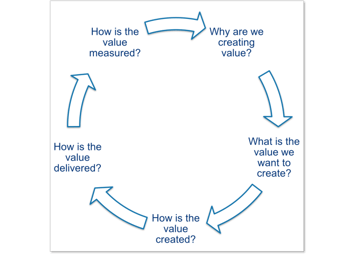Let's face it, the world is complicated, and it seems to get more so every day. Nowhere is this truer than in the business world where a labyrinth of interdependencies and ever-changing market and business dynamics requires a quantum leap in strategic thinking. This is the challenge that excites us at DesignChain. We're working on an innovative solution that brings together the best of Artificial Intelligence (AI) and Digital Twin technology, not just for the finance industry, but for multiple sectors facing complex decision-making scenarios.
The Exciting World of Digital Twins
What if we told you that we were working on creating a parallel universe? A universe that mirrors the complexity of your business ecosystem? Sounds like science fiction, right? But that's exactly what a Digital Twin is - a dynamic, digital mirror of your real-world business ecosystem.
Remember when you were a kid and learned not to touch a hot stove? That's the kind of learning we're talking about here - trial and error. But instead of burning fingers, we're giving decision-makers a safe, virtual environment where they can experiment, learn, and grow.
Our goal is to capture the intricate ballet of the marketplace, the rhythm of policy decisions, and the dance of investment strategies and organizational configurations within this digital space. By doing so, we're looking to hand decision-makers a powerful tool that gives them a bird's eye view of their operations, helping them dive deep into analyses, make precise risk assessments, and map out future scenarios through strategic experimentation.
Creating a Digital Twin involves a couple of fascinating ingredients: a dynamic simulation model, and real-time data that accurately represents your business's current state. We're striving to blend these two elements into a robust digital twin solution, allowing you to tinker with variables, analyze outcomes, and communicate your findings effectively.
Real-world environments come with their own challenges - high costs, risks, and regulatory hurdles, to name a few. Simulation models, however, are a whole different ball game. They're cost-effective, safe, and not bound by real-world time constraints. That means AI can learn faster and more efficiently. Think of it as a virtual playground for AI, a place where it can play around with scenarios and learn from its experiences.
The best part? This isn't some pipe dream. Industries like manufacturing and supply chains are already reaping the benefits of Digital Twin technology. At DesignChain, we're trying to bring the same intuitive insights and decision-making support to other industries as well, and more specifically the strategy and business design.
The Adventure That Was Synap-C
Every journey has its bumps, missteps, and grand adventures. Ours had Synap-C.
Let's rewind the clock a bit. The early days of DesignChain saw us embarking on a wild ride called Synap-C. Back then (early 2000's), we were dreaming big and stepping into uncharted territory. AI's processing power was still in its infancy, and every time we fired up Synap-C, it seemed like we'd have to pool all the neighborhood's electricity.
Synap-C was a non-deterministic reinforcement multi-agent environment that was designed to pursue one major goal: maintaining stability in the ecosystem. This was no small feat, especially considering we were building everything from scratch. From creating tools for modeling strategy and business, to setting standards for "belief" systems, to developing genetic algorithms and swarm intelligence – it was a mammoth task that had us burning the midnight oil and downing gallons of coffee.
Yet, Synap-C was ahead of its time, a pioneering endeavor that encountered its fair share of obstacles. Our biggest challenge was the unpredictability of the results. Being a continual learning system, Synap-C produced different outcomes each time it ran. While this was an exciting feature for us, some stakeholders found it hard to digest. The concept of a learning system that evolved with each iteration was new and not easily accepted.
However, looking back, Synap-C was an invaluable exercise. It taught us that the path to innovation is filled with twists and turns, and that every stumble is an opportunity to learn, adapt, and grow. As we forge ahead with our current work on Digital Twins and AI, the lessons we learned from our Synap-C adventure are always at the back of our minds, reminding us to push boundaries, embrace the unexpected, and always, always keep learning.
At DesignChain, we're not just looking to build a solution. We're working on a revolution. A revolution that harnesses the power of complex systems dynamics, digital twins, and AI to give decision-makers the tools they need for a constantly changing business landscape.




